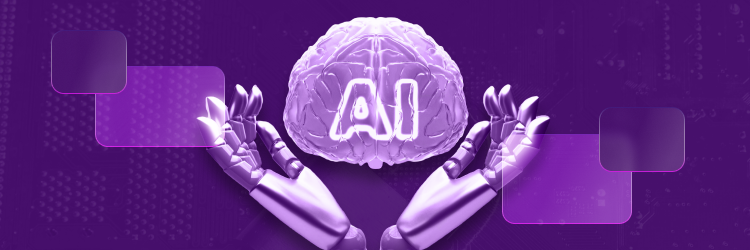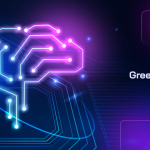
AI Security is growing in importance as digital threats evolve. It improves protection by spotting unusual activities and preventing breaches. AI Security also safeguards data on digital platforms. Acting like a 24/7 guard helps individuals and organizations stay ahead of threats.
This ensures safer online spaces in today’s increasingly connected world.
What Is AI Security?

AI Security uses artificial intelligence to protect networks, data, and systems from cyberattacks. It helps detect, prevent, and respond to threats by automating tasks and spotting suspicious activity. Knowing the different Types of AI in security helps organizations choose the right tools.
AI security watches network traffic and user behavior. It learns what’s normal and flags anything unusual, allowing faster threat detection and response.
According to IBM, companies using AI security contained data breaches 108 days faster and saved an average of $1.76 million. This shows how important AI is for cybersecurity.
The AI security market is growing fast—from $20.19 billion in 2023 to $141.64 billion by 2032. This rising demand shows more companies are turning to AI for protection.
Some security tools use large language models (LLMs) to turn complex data into simple, clear advice. This helps security teams respond quickly and effectively.
The Importance of AI in Security Today
AI has become essential in modern cybersecurity. Cyber threats are becoming more sophisticated, and the digital field continues to expand. As cloud and hybrid environments grow, vulnerabilities increase. This creates complex challenges for organizations. AI security helps by automating processes, finding vulnerabilities, and speeding up attack responses. It addresses these issues.
One of AI’s key strengths is its advanced threat detection. Machine learning algorithms analyze vast amounts of data in real-time. They spot anomalies and patterns that could signal a security threat. This proactive approach allows organizations to detect emerging threats early. Even sophisticated attacks, often missed by traditional methods, can be identified. AI also excels in behavioral analytics, flagging user or network activity deviations. This helps detect insider threats or zero-day attacks.
AI’s ability to automate incident responses is another critical advantage. Security systems powered by AI react quickly to mitigate breaches. For example, they can isolate malware or block repeated brute-force login attempts. They can also remediate vulnerabilities with minimal human intervention. This adaptability and speed make AI indispensable in combating evolving cyber threats.
How Does AI Improve Security?

Artificial intelligence boosts security. It speeds up threat detection, automates responses, and scales solutions to meet challenges. It helps organizations avoid cyber threats while reducing human effort.
AI analyzes large volumes of data to detect unusual patterns and potential threats. It monitors network activity, user behavior, and system logs to identify anomalies. Real-time alerts enable quick responses, reducing the risk of damage. Additionally, AI minimizes false positives. This lets security teams focus on real threats instead of wasting time on unnecessary alerts.
AI automates threat identification, analysis, and response processes. For example, it can isolate infected systems or block malicious IPs in seconds. It can also patch vulnerabilities without needing human intervention. This rapid response minimizes the impact of cyberattacks. AI further strengthens phishing protection by analyzing emails for suspicious content and links. This helps prevent potential data breaches.
AI security solutions can handle large networks and complex infrastructures. They learn from past data to adapt to new and evolving threats. This continuous learning improves their accuracy over time. AI also helps organizations manage vulnerabilities by prioritizing risks and addressing them effectively. Biometric authentication tools powered by AI enhance user access security. This reduces risks from credential-based attacks.
How AI Works in Cybersecurity
AI security is changing how we fight cyber threats. It uses tools like machine learning, neural networks, and data analysis to detect risks and respond quickly. By handling repetitive tasks and analyzing large amounts of data, AI lightens the workload for human teams. It also strengthens digital defenses to counter evolving cyberattacks.
Machine Learning in Cybersecurity
Machine learning plays a big role in AI security. It studies past data to understand patterns and predict risks. AI systems use this knowledge to flag unusual activities, like unauthorized logins or data access. These quick alerts help organizations respond faster, preventing attackers from causing damage. For those curious about how these technologies differ, Machine Learning vs AI offers insights into their unique approaches to deep learning, and decision-making.
Neural Networks for Advanced Analysis
Neural networks in AI security work like a digital brain, analyzing complex patterns. They process network traffic and user behavior to find hidden threats. These systems are excellent at detecting insider risks or new vulnerabilities. Traditional tools might miss these issues. But, neural networks can spot subtle warning signs. This boosts protection for organizations.
Data Analysis and Threat Intelligence
AI uses data analysis to process global threat intelligence. It finds risks by examining trends, vulnerabilities, and attack methods. This insight helps organizations act before threats grow. By keeping security teams informed, AI security enhances decision-making. It also creates better situational awareness so companies can stay prepared for emerging cyber risks.
Integrated Security Systems
AI security combines machine learning, neural networks, and data analysis into one strong system. These integrated tools check networks, adapt to new threats, and learn from past incidents. They work 24/7 to protect organizations, regardless of their size. This combination ensures reliable security that evolves as cyber threats grow more sophisticated.
Threat Detection Using AI
AI analyzes behavior to spot risks in real-time. It creates a baseline of normal activity by studying network and user data. Any unusual action, like odd logins or large file transfers, gets flagged immediately. This fast detection reduces the time hackers have to cause damage, keeping networks and customer data safe.
AI also spots insider threats and zero-day risks through continuous monitoring. These subtle dangers might escape traditional tools but not AI security. AI uses threat actors and data patterns to provide early warnings and quick responses. This proactive defense helps organizations stay ahead of even the most complex threats.
Automating Security Responses
AI makes security responses faster and more accurate. It can isolate infected devices, block harmful IPs, and apply fixes automatically. These actions happen immediately, reducing the damage attackers can cause. Automated responses also ensure systems keep running smoothly during incidents.
Automation helps security teams handle routine tasks like log reviews or vulnerability scans. This reduces human error and frees up teams to tackle more strategic challenges. With AI security, responses are faster, more efficient, and always ready for the next threat.
Potential Vulnerabilities and Security Risks of AI
Artificial intelligence delivers remarkable advantages, but it also brings security risks. These include adversarial attacks, data breaches, and flaws in AI models. Organizations must identify and address these threats to maintain secure and reliable AI systems.
Data Security Risks
AI systems rely on large datasets, making them vulnerable to tampering and breaches. Compromised data can lead to inaccurate or unreliable outputs. Securing data throughout development and deployment is crucial to reducing these risks.
Sensitive information processed by AI, such as personal or business data, attracts hackers. Weak security measures increase vulnerability. Strong encryption, strict access controls, and secure storage are essential for protection.
AI Model Security Risks
AI models are at risk of theft, manipulation, and reverse engineering. Attackers can alter models to cause errors or biased results. Tight access controls are critical to safeguard model integrity.
Model drift and decay over time weaken performance. Attackers can exploit these flaws to manipulate outcomes. Regular monitoring and retraining with fresh data help maintain accuracy and security.
Adversarial Attacks
Adversarial attacks involve subtle input changes that trick AI systems into making errors. For instance, an attacker might modify an image slightly to mislead AI into misclassifying it. These attacks highlight the importance of ethical AI design. Adhering to AI Ethics principles can help mitigate these risks.
Another threat is prompt injection attacks. These involve malicious prompts to manipulate AI systems into harmful actions, such as leaking data. To combat this, organizations must rigorously test their systems. Strengthening algorithms is also critical to resist adversarial exploits. Regular updates are essential to maintain robust defenses.
Input Manipulation Attacks
Input manipulation attacks occur when attackers alter data to influence AI outputs. In data poisoning, for example, attackers feed bad training data into AI systems to skew results. This can lead to biased or inaccurate predictions. Validating training data regularly is critical for preventing such exploits.
Attackers may also mimic legitimate patterns to bypass detection systems. For example, small changes to login attempts can trick AI tools. They would then allow unauthorized access. Organizations must secure data pipelines and validate inputs to reduce these vulnerabilities effectively.
Supply Chain Attacks
Supply chain attacks target tools and components to develop or maintain AI systems. Attackers exploit third-party software, libraries, or hardware vulnerabilities to compromise models. For example, in AI supply chain one, malicious code in a software library could leak sensitive data or allow unauthorized access.
Organizations can mitigate these risks by conducting regular audits of their supply chains. Verifying third-party vendors and enforcing strict security standards and protocols are essential. Ensuring that all components used in AI systems are secure is vital to prevent supply chain vulnerabilities.
Benefits of AI in Security

Integrating AI in security provides many advantages that improve protection and streamline operations. Below are some key benefits:
- Enhanced Threat Detection: AI analyzes large data sets in real-time to identify threats quickly and accurately, including sophisticated attacks traditional tools often miss. It reduces attackers’ time to exploit vulnerabilities.
- Faster Incident Response: AI detects, investigates, and isolates threats within seconds, minimizing the impact of attacks and ensuring better system protection.
- Proactive Cybersecurity Measures: AI predicts potential vulnerabilities using historical data, continuously adapts to emerging risks, and helps address weak spots before exploitation.
- Improved Operational Efficiency: By automating tasks like log monitoring and vulnerability scanning, AI reduces workloads, minimizes errors, lowers costs, and allows teams to focus on complex issues.
- Scalability for Complex Environments: AI scales effortlessly for large infrastructures, integrates with existing tools, and enhances real-time monitoring and automated responses.
- Better User Experience: AI-powered tools like biometric authentication and behavioral analytics ensure secure, seamless access control, eliminating the need for complex passwords.
- Automated Compliance: AI simplifies compliance with regulatory standards like AI Regulation frameworks, GDPR, and CCPA. It automates tasks like monitoring, data protection, and reporting.
- Understanding Emerging Threats: AI continuously learns from data to track and counter new threats, ensuring organizations stay prepared for evolving cybersecurity challenges.
Challenges and Limitations of AI in Security
While AI in security provides many benefits, it also has limitations. These include biases, high costs, and dependence on data quality. We must address these challenges. It’s vital for AI’s effectiveness and reliability in cybersecurity.
AI systems depend on high-quality data to function accurately. Inaccurate or biased data can lead to flawed results. For example, a poorly trained model might flag safe activities as threats. This increases false positives and lowers effectiveness. Ensuring diverse and accurate data during training is critical for reliable AI systems.
Implementing AI in security requires significant investments. Advanced tools need substantial resources for infrastructure, training, and regular maintenance. These high costs often pose a challenge for smaller organizations. Balancing expenses with the benefits of AI remains a concern for many businesses.
AI systems can also lack transparency. They sometimes fail to explain their decisions clearly. For example, understanding its reasoning can be difficult if AI flags a threat. This “black box” issue highlights the importance of developing explainable AI tools for security.
Ethical Considerations
AI in security raises privacy concerns as it processes large amounts of personal data, which could be misused or breached if mishandled. Organizations must comply with privacy laws like GDPR and CCPA to protect user data.
Cybercriminals also exploit AI, using it for advanced schemes like phishing. To counter this, companies should adhere to AI Ethics principles, focusing on fairness, transparency, and accountability in design and use.
Addressing AI Vulnerabilities
Adversarial AI is a significant threat, where attackers manipulate inputs to trick AI into making incorrect decisions, like missing threats. Strengthening algorithms and regular testing can help mitigate these risks.
Outdated AI models are also prone to errors and attacks, making frequent updates and advanced monitoring essential for maintaining security and effectiveness.
Real-World Applications of AI in Security

AI in security is changing how industries protect networks, prevent fraud, and improve safety. Real-time monitoring and advanced technologies enable faster threat detection and response, transforming cybersecurity.
AI in Network Security
AI boosts network security by detecting intrusions in real-time. It monitors traffic, flags unusual behavior, and quickly identifies threats. For example, AI can spot abnormal login attempts or unexpected data transfers, enabling security teams to act fast.
Over time, AI learns network behavior and suggests policy updates to strengthen defenses. It can enforce zero-trust models by distinguishing genuine users from malicious ones. This keeps networks secure as threats evolve.
AI in Fraud Prevention
AI helps financial organizations detect fraud by analyzing transactions for irregularities. It monitors patterns to identify suspicious activities. These include unusual spending or unauthorized access. For instance, AI can flag a stolen credit card used for transactions that deviate from a customer’s normal habits.
Machine learning improves fraud detection by classifying activities in real-time. These systems learn from data to differentiate legitimate from fraudulent transactions. They also adapt to new tactics. This keeps financial security effective against new threats.
AI in Physical Security
AI enhances physical security with advanced surveillance and access control systems. Tools like facial recognition ensure that only authorized individuals enter secure areas. Behavioral analytics detect unusual actions, such as erratic movements in monitored zones. These alerts allow faster responses to threats. They ensure safety and prevent escalation.
Examples of AI Tools for Security
Here are prominent AI tools for security, their features, and real-world use cases:
- Darktrace: Darktrace uses self-learning AI to detect and neutralize cyber threats in real time. It mimics the human immune system and adapts to new attack patterns. The tool offers autonomous response capabilities for quick action against threats. Financial institutions use Darktrace to monitor networks and block malware before damage occurs.
- Cylance: Cylance specializes in endpoint protection by preventing malware and other threats before execution. It uses machine learning to analyze behavior and block risks proactively. Healthcare providers use Cylance to secure patient data. This ensures compliance with regulations and mitigates ransomware and phishing risks.
- Vectra AI: Vectra AI focuses on network detection and response (NDR). It monitors traffic and identifies hidden attackers in real-time. The tool also provides insights into vulnerabilities. Universities use Vectra AI to protect sensitive data. It helps detect threats early and ensures the security of academic resources.
- SentinelOne: SentinelOne offers endpoint and identity protection through behavioral AI. It detects and reverses malicious changes, restoring systems quickly. Enterprises rely on SentinelOne to block ransomware outbreaks. It also ensures cloud environments remain protected against advanced threats.
- McAfee MVISION: McAfee MVISION enhances endpoint security by using machine learning to detect zero-day threats. It restores systems without reimaging, maintaining productivity. Organizations deploy McAfee MVISION to protect both on-premise and cloud-based environments. This helps prevent advanced persistent threats (APTs).
- FortiAI: FortiAI leverages artificial neural networks (ANN) to detect malware and prioritize risks. It acts as a virtual analyst to reduce human dependency. Manufacturing firms use FortiAI to protect industrial systems. This ensures operational continuity against threats targeting operational technology (OT) environments.
- Tessian: Tessian focuses on email security and data loss prevention. It uses machine learning to identify phishing attempts and prevent leaks. Law firms rely on Tessian to secure sensitive client communications. This protects confidential information and ensures compliance with data protection laws.
- LogRhythm: LogRhythm offers centralized security information and event management (SIEM). Its behavioral analytics detect anomalies and streamline incident responses. Energy companies implement LogRhythm to monitor critical infrastructure. This ensures quick detection and mitigation of security threats.
Best Practices for Implementing AI in Security
Adopting AI for security can strengthen defenses, but it demands careful planning. Organizations should start by building secure frameworks, assessing existing infrastructure, and ensuring it meets AI’s data and computing needs. Proper security controls must be in place during deployment to prevent breaches, and employees should be trained to manage AI tools effectively to minimize risks.
To enhance AI implementation, identify potential vulnerabilities during development and use frameworks like Google’s Secure AI Framework to mitigate risks. Regularly test AI models to ensure they resist attacks and maintain secure operations. A proactive approach reduces exploitation risks and ensures long-term system reliability.
Ensuring Data Privacy
Encrypt sensitive data and enforce strict access controls to reduce exposure. Anonymize data during training to prevent leaks and comply with privacy standards. Transparent data practices build trust and support ethical AI implementation.
Regular Updates and Maintenance
AI systems need continuous updates to address evolving security vulnerabilities. Retraining models with fresh data improves accuracy and adaptability. Regular updates fix bugs and strengthen defenses against emerging threats.
FAQs
How big is the AI security market?
The AI security market was $22.4 billion in 2023 and is expected to hit $60.6 billion by 2028. The public security AI market will grow from $12.62 billion in 2023 to $16.45 billion in 2024.
Is AI replacing cybersecurity?
No. AI helps cybersecurity but doesn’t replace it. It automates tasks, but human experts are still needed for strategy and decision-making.
How does AI improve cybersecurity?
AI spots threats fast by analyzing data in real-time. It learns from patterns, detects risks, and reduces false alarms, helping teams focus on real threats.
What are examples of AI in security?
- Darktrace: Finds network threats.
- Cylance: Protects devices.
- Tessian: Secures emails. AI also powers biometric logins, fraud detection, and security scans.
What does it cost to use AI in security?
Small setups may cost a few thousand dollars yearly. Big systems can cost hundreds of thousands, depending on size, licenses, and upkeep.
How is AI different from traditional security?
Traditional security follows fixed rules. AI learns and adapts, spotting new and evolving threats more effectively.
Conclusion
AI in security is changing how we fight cyber threats. It quickly detects risks, automates responses, and protects data. AI also reduces human errors and keeps up with evolving attacks. Today, it’s a must-have for protecting digital systems.
The future of AI in security is strong. New technology makes security tools smarter and more reliable. Companies need to invest in AI to stay ahead of cybercriminals. Using AI is no longer a choice—it’s a necessity. But it’s also important to manage AI’s own security risks for long-term safety.






















